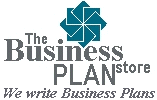

Serious about your business?
This is where you belong!
215-256-0663
This is where you belong!
215-256-0663
On the Web since 1995
Clients |
About Us |
Blog |
Home |

The Business Plan Store
201 Alderfer Road
Harleysville, PA 19438
Call Us: 215-256-0663
201 Alderfer Road
Harleysville, PA 19438
Call Us: 215-256-0663
© 1995-2018 The Business Plan Store
Business Valuations
INDIVIDUALS, BUSINESSES AND THE FINANCIAL COMMUNITY VALUE COMPANIES in a variety of ways. Three significant approaches include:
1. The Relative Value Approach
With these methods, analysts determine whether a company is overvalued or undervalued by comparing its current Price/Earnings Ratio to one or more of the following indicators:
1. The Relative Value Approach
With these methods, analysts determine whether a company is overvalued or undervalued by comparing its current Price/Earnings Ratio to one or more of the following indicators:
1.
the past P/E multiple of similar companies;
2.
certain financial ratios;
3.
earnings and dividend growth rates.
For example, according to this approach, if a company with a relatively higher P/E Ratio has a lower-than-average ROE, the company is potentially overvalued.
2. The Asset Valuation Approach
This method assumes that the value of a business is simply the book value of its assets (sometimes adjusted for replacement cost). According to this approach, if the market price of a company is higher than it's book value, the company is potentially overvalued.
3. The Discounted Cash Flow (DCF) Approach
In this approach, the value of the company is measured by estimating the expected future cash flows, and then "discounting" those future flows by the desired rate of return in order to determine the "present value" of the future cash stream.
The accounting-based indicators (e.g., earnings per share, return on investment and return on equity) used in the relative value and asset valuation approaches may have serious limitations:
2. The Asset Valuation Approach
This method assumes that the value of a business is simply the book value of its assets (sometimes adjusted for replacement cost). According to this approach, if the market price of a company is higher than it's book value, the company is potentially overvalued.
3. The Discounted Cash Flow (DCF) Approach
In this approach, the value of the company is measured by estimating the expected future cash flows, and then "discounting" those future flows by the desired rate of return in order to determine the "present value" of the future cash stream.
The accounting-based indicators (e.g., earnings per share, return on investment and return on equity) used in the relative value and asset valuation approaches may have serious limitations:
•
They are influenced by arbitrary but equally acceptable subjective accounting conventions (such as LIFO vs. FIFO inventory accounting and various depreciation methods).
•
They do not take into account the following factors:
1.
various levels of risk (both business and financial) in different companies;
2.
the working capital and fixed capital investment needed for projected sales growth;
3.
dividend policy;
4.
the time value of money, where a dollar received today is worth more than a dollar received in the future because today's dollar can be invested to earn a return in the interim.
---------------------------------------
TRUE ECONOMIC VALUE IS BETTER MEASURED by the more objective net cash flows. Valuation focuses on the risk-adjusted discounted stream of future cash flows.
THE DCF APPROACH MEASURES THE VALUE OF A COMPANY by estimating the expected future cash flows, and then "discounting" those future cash flows by the buyer's required rate of return in order to determine their present value.
Two important aspects of DCF analysis include:
THE DCF APPROACH MEASURES THE VALUE OF A COMPANY by estimating the expected future cash flows, and then "discounting" those future cash flows by the buyer's required rate of return in order to determine their present value.
Two important aspects of DCF analysis include:
•
How an appropriate discount rate is determined; and
•
How the value beyond the short-term forecast period ("residual value") is determined.
THE DISCOUNT RATE MUST BE SUCH that it will reflect the relative levels of business and financial risk. An appropriate discount rate can be derived from two factors: the "risk-free" rate of return (as with government securities) and some premium for investing in the risk of a business venture. Individuals who purchase businesses that have a high potential for success will usually look for opportunities with a minimum of 6% to 8% premium over risk free investments. Why? Because they are usually borrowing money at risk-free rates plus 2% or 3%. The spread between their cost of money and required rate of return then becomes very small.
RESIDUAL VALUE CAN BE ESTIMATED in a variety of ways. For example, one might consider what the potential sale price for the business would be at the end of the forecast period, and discount that sale price back to its present value. The attached analysis uses the perpetuity method for estimating residual value. It assumes that the company will continue to generate a steady cash flow in perpetuity. The value of that cash flow is simply the cash flow divided by the required rate of return, the discount rate mentioned above. That value, which materializes at the end of the forecast period, is then discounted back to present value to determine its worth today.
THE VALUE OF THE BUSINESS, then, is the sum of the present values of the net cash flows in the forecast period plus the present value of the residual value at the end of the forecast period.
The Business Plan Store uses the discounted cash flow approach to business valuation.
RESIDUAL VALUE CAN BE ESTIMATED in a variety of ways. For example, one might consider what the potential sale price for the business would be at the end of the forecast period, and discount that sale price back to its present value. The attached analysis uses the perpetuity method for estimating residual value. It assumes that the company will continue to generate a steady cash flow in perpetuity. The value of that cash flow is simply the cash flow divided by the required rate of return, the discount rate mentioned above. That value, which materializes at the end of the forecast period, is then discounted back to present value to determine its worth today.
THE VALUE OF THE BUSINESS, then, is the sum of the present values of the net cash flows in the forecast period plus the present value of the residual value at the end of the forecast period.
The Business Plan Store uses the discounted cash flow approach to business valuation.
---------------------------------------
Following is a valuation of XYZ Company (client name not shown) that was prepared by The Business Plan Store:
| ASSUMPTIONS | |||||
| Risk-free interest rate | 5.00% | ||||
| Risk premium | 11.00% | ||||
| Discount rate | 16.00% | ||||
| CASH FLOW FORECAST | 2003 | 2004 | 2005 | 2006 | 2007 |
| Sales | $395,313 | $461,244 | $470,469 | $479,878 | $489,476 |
| Pre-tax income | 47.907 | 74.949 | 78,312 | 80,292 | 82,289 |
| Income taxes | 16,767 | 26,332 | 27,409 | 28,102 | 28,801 |
| Net income | 31,140 | 48,717 | 50,903 | 52,190 | 53,488 |
| Plus: depreciation | 22,354 | 22,354 | 22,354 | 22,354 | 22,354 |
| Less: increase in working capital | 9,388 | 888 | 906 | 924 | 942 |
| Net cash flow | $44,106 | $70,183 | $72,351 | $73,620 | $74,900 |
| PRESENT VALUE OF CASH FLOWS | |||||
| 2003 | $38,022 | ||||
| 2004 | 52,157 | ||||
| 2005 | 46,352 | ||||
| 2006 | 40,660 | ||||
| 2007 | 35,661 | ||||
| $212,853 | |||||
| Present value of residual value: | |||||
| Perpetuity net cash flow (NCF) | $74,900 | ||||
| Discount rate | 16.00% | ||||
| Future value of perpetuity NCF | $468,125 | ||||
| Present value of perpetuity NCF | 222,880 | ||||
| Value of XYZ Company | $435,733 | ||||
We write business plans! If you want to see yours ......
Financial Projections
Home
Looking for
Professional
Business Plan Writers?
Call us: 215-256-0663
Professional
Business Plan Writers?
Call us: 215-256-0663
WE ARE professional business plan writers.
FOR MORE INFORMATION
Visit us on a Big Screen
TheBusinessPlanStore.com
Visit us on a Big Screen
TheBusinessPlanStore.com
Be noticed! Our remarkable product is your business plan. If you want to see it, contact us today.
© 1995-2016 The Business Plan Store



